- Home
- Tom Clancy
Carrier: A Guided Tour of an Aircraft Carrier Page 16
Carrier: A Guided Tour of an Aircraft Carrier Read online
Page 16
Testing such powerful machines is a dramatic procedure. Scattered around the deck were a number of orange-painted, water-filled, wheeled trolleys called deadweights. Each deadweight simulates a fully loaded aircraft, with attachment points that allow it to be hitched to the shuttle of a catapult. After the bow has been pointed into the James River channel, and the Coast Guard and local boaters have been suitably warned, each catapult fires the entire range of deadweights. The tests are noisy and the sight of the weights flying hundreds of yards/meters into the channel is bizarre. Nevertheless, this is a highly effective way to prove that the machinery is ready. After leaving the catapults, we headed aft to inspect the catapult control station between Catapults 1 and 2.35 Set on a hydraulically raised platform under an armored steel door, the control station is a pod where the catapult officer—or “shooter”—can control the catapults in safety and comfort. Another identical station is located on the port side, controlling Catapults 3 and 4.
The island structure of the Harry S. Truman (CVN-75) being finished at NNS.
JOHN D. GRESHAM
Next we walked over to the island structure, where our guides showed us how the many systems on the flag and navigation bridges, the primary flight control, and the meteorology office were installed. Although the basic Nimitz design is over thirty years old, the many changes bringing it into the 21st century are quite visible. Up on the Truman’s navigation bridge, for example, are many of the “Smart Ship” systems (mentioned in the second chapter) that make it possible for three people to steer the ship from auto-matedcontrol stations (before, almost two dozen people were required to do the same job). Similar systems will be scattered throughout the Truman, and will be tested when she goes to sea in 1998.
The cluttered flight deck of the Harry S. Truman (CVN-75) while being fitted out at NNS.
JOHN D. GRESHAM
As we moved farther aft, we passed by the kinds of tool sheds and other temporary storage buildings that you find at any construction site. Then we dropped down a ladder back to the hangar deck and down another into the bowels of the ship. At this point, the primary work on Truman involved preparing some eight hundred (out of a total 2,700) compartments for turnover to the Navy. Those compartments contain crew berthing, medical facilities, galley and mess areas, office spaces, the ship’s store, the post office, and storage rooms. Everything needed to finish these spaces must be carried up and down ladders and through narrow passageways by hand. Sprained knees and ankles are the price paid to haul paint cans, power cables, and tools into the ship.
Shortly after this job was completed, just after New Year’s of 1998, the first of the Navy’s crew of “plankowners” arrived. Several of the ship’s spaces that had already been turned over proved to be spotless when we visited them; and the quality and workmanship are very impressive. In particular, the communications spaces, which were just being brought to life by a Navy crew, had the look and smell of a new automobile. As the final stop on my visit, I was allowed to visit the magazines and the pump room in the very bottom of the ship.
It was close to quitting time when we made our way back to the hangar deck, aft to the fantail, and down the access ramps to the dock. As we sat waiting for our tired leg muscles to loosen, the shift alarm went off, and we watched 2,600 NNS workers come off shift and head for home—an impressive sight. As they passed by us on the dock, I was reminded of the builders of the Egyptian pharaoh’s pyramids. Both groups labored to build a wonder of the world. Unlike the pharaoh’s slaves who hauled and stacked the stones in the desert, these people have chosen to labor at their “wonder of the world.” They want these jobs, take pride in what they do, and make good livings. For those who think that Americans don’t build anything worthwhile these days, I say go down to NNS and watch these great men and women build metal mountains that float, move, and fly airplanes off the top. It truly is the “NNS” miracle.
The “NNS Miracle”: Some of the 2,600 Newport News Shipbuilding workers leave the Harry S. Truman (CVN-75) at the end of an afternoon shift.
JOHN D. GRESHAM
When the initial crew cadre came aboard Truman in early 1998, they began to help the NNS yard workers bring the ship’s various systems to life. This process (ongoing until the ship is handed over to the Navy) is designed to make her ready for her “final exams,” when the carrier will become truly seaworthy, with her reactors powered up and most of her “plankowner” crew aboard. Combat systems tests occur when the ship is about 98% complete, with evaluations of the radar and radio electronics, defensive weapons, and all the vast network of internal communications and alarms. After these tests, it is time for sea trials off the Virginia capes, including speed runs to evaluate the power plant. After these trials are completed, the Navy conducts one last series of inspections prior to the most important ceremony of the entire building process (at least for NNS). This is the signing of the Federal Form DD-250, which indicates that the Navy has taken possession of the vessel and NNS can now be paid!
The next six to eight months are filled with training and readiness exercises, including the traditional “shakedown” cruise. Following this is a short period of yard maintenance (known as “Post Shakedown Availability”) to fix any problems that have cropped up. The new carrier will then spend much of her time over at the Norfolk Naval Station, moored to one of the long carrier docks, where she will get ready for commissioning. At the commissioning ceremony, the high officials, the dignitaries, and the ship’s sponsor once again gather. Again there are speeches and presentations. And almost a decade after the decision was made to build this mighty warship, a signal is given, the commissioning pennant is raised, the crew rushes aboard to man the sides, and she is finally a warship in the U.S. Navy.
The Nimitz Class: A Guided Tour
Let’s now take a short walking tour of a Nimitz-class carrier. We’ll start the way most guests come aboard, at the officers’ accommodation brow on the starboard side just under the island. One of the first things you notice is the thickness of the hull, which is composed of high-strength steel several inches thick. It is that thick to protect against battle damage and fires. The same material makes up the flight and hangar decks, providing them with a similar resistance to damage and fires. Everywhere, there are redundant water and firefighting mains, with damage control stations in every passageway. The Navy is deadly serious about firefighting, and there even is a water deluge system, which can flood the deck, or wash it down in the event of a nuclear or chemical attack.
A front cutaway view of an improved Nimitz-class (CVN-68) nuclear-powered aircraft carrier.
JACK RYAN ENTERPRISES, LTD., BY LAURA DENINNO
Past the entryway hatch, you take the first of many tall steps over structural members the crew calls “knee knockers.” Though they are a constant nuisance to movement throughout the ship, these steel thresholds provide structural strength to the entire vessel. A Nimitz has miles of virtually indistinguishable passageways. And there are dozens of places in them where just standing around watching can be hazardous—due to noise, fumes, moving machinery, or simply wet, slippery decks. These passageways are considerably narrower than those in other combat vessels, particularly amphibious ships which have room for combat-loaded Marines to move around. Despite their huge size, carriers are volume-limited, and space for people to live, work, and walk takes away capacity for fuel, bombs, and fighting power. So getting around with any sort of load can be a genuine chore. You often see “bucket brigades” of sailors moving loads of food and other supplies from one place to another.
The narrow corridors are one important reason for the Navy’s constant emphasis on simple courtesy. A senior officer or chief headed in the opposite direction always gets a respectful greeting and the right of way in these narrow passages. I learned a valuable lesson sometime ago from a civilian analyst who had spent many years on board Navy ships: “If you’re standing anywhere and you’re not touching metal, you’re probably in somebody’s way.”
&nb
sp; Moving inboard through several hatches, you emerge into the vast hangar deck; 684 feet/208.5 meters long, 108 feet/33 meters wide, and 25 feet/ 7.6 meters tall—about two-thirds the total length of the ship. Three immense sets of power-driven sliding armored doors divide the hangar bay into zones, to limit the spread of a fire or damage from explosions. In good weather, daylight floods in from four huge oval openings in the sidewalls where the elevators are located. In bad weather sliding barriers seal off the elevator openings to keep the interiors safe and dry. The elevators themselves are the largest aluminum structures on the ship (to save weight). Each of these mammoth lifts (one on each side aft, with two others forward on the starboard side) can raise two fully loaded F-14 Tomcats (the heaviest carrier aircraft) to the flight deck at one time. This is one of the few places on the ship where you can actually see the sea and sky, and remind yourself of the outside world. The flight deck, by contrast, is a highly restricted area. Since there are no portholes, most of the crew rarely sees the light of day. You often find crew members who go days and weeks at a time without either a breath of fresh air or a view of the outside world.
The hangar deck is one of the three main horizontal structures on a carrier (the flight deck and keel/double bottom are the other two), and it provides much of the stiffness and protection for the rest of the ship. Any damage from hits on a carrier should be contained outside the armored boxes that surround the hangar deck and engineering/living spaces below. When it’s empty, you would have room to play two games of American football in the hanger bay. But when it’s filled with fifty or sixty aircraft only inches apart, there is barely room to worm your way through the mass of landing gear, pylons, and maintenance equipment. The hangar deck is always packed with airplanes and equipment, though there is not enough room to strike down all of the air wing’s birds at one time. This means that some of the birds must always be parked on the flight deck. Fortunately, Naval aircraft are designed to withstand the corrosive effects of salt water, and can take the punishment fairly well.
Just aft of the elevator bay is a large stowage area where the ship’s boats are stacked, along with bulky items like forklifts, spare arresting cable reels, and spare engines. Moving aft from this holding area, you find the engine and maintenance shops, which completely fill the stern of the ship. Here the ship’s Aircraft Intermediate Maintenance Division (AIMD) repairs, overhauls, and tests engines, hydraulic pumps, electronics boxes, and countless other mechanical components that keep planes flyable and combat-ready. The maintenance shops are divided up into small spaces where work is done that normally takes acres of workshops and hangars back ashore.
Farther aft of the AIMD shops, you again break out into daylight on the stern, or fantail, of the ship, an open area the full width of the hull, roofed by the flight deck, with projecting platforms and catwalks on either side. Mounted on the fantail are massive test stands, where aircraft engines can be strapped down and run at full power. Because no bit of open space goes to waste on a carrier, you’ll only rarely find a time when you can just stand back here and watch the ocean go by. This is especially true during flight operations. If an aircraft should hit the stern (in what aviators dryly call a “ramp strike”), the fantail is going to be showered with flaming jet fuel and debris. Such accidents are very rare, but they do happen, which means that unless you work there, you aren’t permitted on the fantail. So if you get to see this spot while under way, count yourself lucky.
The hangar bay of the USS George Washington (CVN-73), a Nimitz-class (CVN-68) carrier.
JOHN D. GRESHAM
Here also are one of the four (three on the Nimitz (CVN-68), Dwight D. Eisenhower (CVN-69), and Carl Vinson (CVN-70)) Mk. 15 Phalanx Close-In Weapons Systems (CIWS). A pedestal-mounted 20mm Gatling gun with its own tracking radar, the Mk. 15 is designed to knock down incoming missiles and aircraft. Phalanx has now been in service for almost twenty years, and is considered marginal against the latest threat systems (like the sea-skimming, Mach 2 Russian Kh-41/SS-N-22 Sunburn missile). The Mk. 15’s will eventually be replaced by twenty-one-round launchers for the Rolling Airframe Missile (RIM-116A RAM). RAM is based on the classic AIM-9 Sidewinder air-to-air missile, with a modified seeker from a Stinger (FIM-92) man- portable SAM. RAM—much more capable than the Mk. 15—can actually destroy an incoming Mach 2 missile before it hits (or showers the ship with supersonic fragments).
Located below the Phalanx mount are the twin ports for the ships SLQ-25A “Nixie” torpedo countermeasures system. Nixie is a towed noisemaker streamed behind the ship when there is a threat of incoming torpedoes. The idea is that the “fish” will chase the towed decoy, and detonate against it instead of the ship. Since each decoy can be used only once, two Nixie decoys are kept at the ready, each at the end of a spooled tether in the stern. Finally, on a platform at the stem next to the Mk. 15 stands the instrument landing system. This is a stabilized “T”-shaped bar of vertical and horizontal lights, which helps a pilot on final approach judge the roll and motion of the ship.
Heading back forward into the hangar bay, you will probably notice the “spongy” feel of the deck, which comes from the grayish-black non-skid coating that is applied to seemingly every horizontal surface exposed to the weather. Non-skid—a mix of abrasive grit and synthetic rubber applied in a rippled pattern—keeps you from slipping on a wet, oily, or tilted deck, an all too common occurrence on a naval vessel. Up on the flight deck, the constant pounding and scraping of landing gear and tailhooks quickly erode the coating and expose bare steel. When this happens, maintenance crews mix up a batch and “touch up” worn spots. Also notable is the hangar deck’s elaborate fire-suppression system, which can put enough foam into the hangar bay to drown the unwary. Fire hoses and mains sprout from every corner of the hangar bay, and damage control gear is also in evidence.
Looking down into the well of one of the hundreds of ladders aboard a Nimitz-class (CVN-68) carrier. These are tall and narrow, and are quite grueling to climb.
JOHN D. GRESHAM
In the overhead are storage racks for everything from aircraft drop tanks to spare engines. You can even see a spare catapult piston—a steel forging as long as a bus—racked high on the wall of the hangar bay. In the forward part of the hangar bay on the starboard side are two more aircraft elevators, as well as the passageways that lead into the forecastle. Here you find more AIMD offices and shops, as well as most of the berthing spaces for enlisted personnel from the embarked air wing. Cramming almost six thousand personnel into a ship, even though it’s close to a quarter mile long, makes for tight quarters. Even so, the enlisted and chiefs’ berthing spaces on a Nimitz are still more comfortable than those aboard a submarine or older Navy surface warship.
For a young person coming aboard a warship for the first time, the cramped personal space may seem harsh. In fact, while personal space is spartan, it is nevertheless quite functional. Enlisted personnel get a stowage bin under their bunks, and a single upright locker about the size of the one you had back in high school. They can also stow some personal items in their workspaces, but they still must always plan ahead when packing to go aboard ship. For sleeping, crew will normally be assigned to a bunk (called a “rack”), which will be one in a stack of three. You will find around sixty racks in a berthing space, with an attached rest room/shower facility (what the Navy calls a “head”), and a small common area with a table, chairs, and television connected to the ship’s cable system. Television monitors can be found in almost every space on board, displaying everything from the ship’s Plan of the Day (called the “POD”), to movies, CNN Headline News, and the “plat cams”—a series of television cameras that monitor activities on the flight deck.
The racks themselves are narrow single beds, with a comfortable foam-rubber mattress, and basic bedding. There are also privacy curtains, a small reading lamp, and usually a fresh-air vent—often a vital necessity. While most of the interior spaces of a Nimitz are air-conditioned, even nuclear-powered chille
rs sometimes have a hard time keeping up with the hot and humid conditions in the Persian Gulf or the Atlantic Gulf Stream in summer. That stream of cool air on your face is sometimes all that lets you sleep. Other distractions on board can also keep you from getting rest, such as the launching and landing of high-performance combat aircraft on the roof. Crew members with quarters just below the catapults and arresting gear have a hard time sleeping when night flight operations are running, which is why the air wing personnel are berthed here. When the wing is flying, they would not be in their racks anyway.
Forward of the living spaces, in the very bow of the ship, is the forecastle. Here the anchors, handling gear, and their huge chains are located. It is also the domain of the most traditional jobs in the Navy: the Deck Division. In an era of computers and guided weapons, these are the sailors who can still tie every kind of knot, rig mooring lines, and handle small boats in foul weather. You need these people to operate anything bigger than a rowboat, and aboard a carrier they are indispensable. On the port side of the forecastle you find the first of a set of “stairs,” which we’ll use to climb up several levels. These are not conventional stairways, but very nearly vertical ladders, and they are quite narrow. You learn to move up and down ships’ ladders carefully, and finding a handy stanchion to grasp when you’re on them becomes instinctive.
Opening another hatch, you find yourself on a small platform adjacent to the bow. From here, you can climb a few steps and move out onto the four and a half acres that is the carrier’s flight deck. Again, the spongy feel of the deck tells you that there is non-skid under your feet. Around the deck, two or three dozen aircraft are packed in tight clusters, to free as much deck space as possible. During flight operations, the noise is incredible. It is so loud that you must wear earplugs just to watch from up on the island, while flight deck personnel who must work among the aircraft wear special “cranial” helmets with thickly padded ear protectors to preserve their hearing. Only Landing Signals Officers (LSOs, the people who guide aircraft during landings) are allowed on deck during flight operations without a cranial, since they have to clearly hear and see aircraft as they approach the stern for landing.

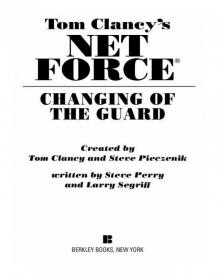 Changing of the Guard
Changing of the Guard Clear and Present Danger
Clear and Present Danger Hounds of Rome
Hounds of Rome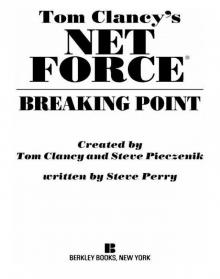 Breaking Point
Breaking Point Tom Clancy's Jack Ryan Books 7-12
Tom Clancy's Jack Ryan Books 7-12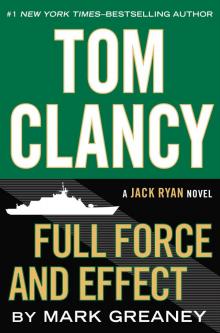 Full Force and Effect
Full Force and Effect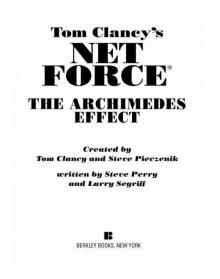 The Archimedes Effect
The Archimedes Effect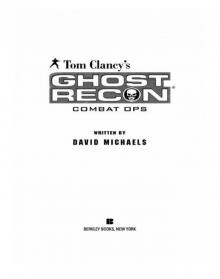 Combat Ops
Combat Ops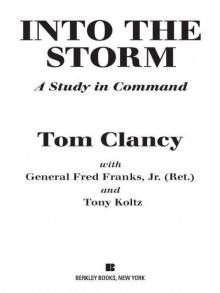 Into the Storm: On the Ground in Iraq
Into the Storm: On the Ground in Iraq Under Fire
Under Fire Point of Impact
Point of Impact Red Rabbit
Red Rabbit Rainbow Six
Rainbow Six The Hunt for Red October
The Hunt for Red October The Teeth of the Tiger
The Teeth of the Tiger Conviction (2009)
Conviction (2009)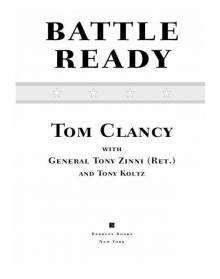 Battle Ready
Battle Ready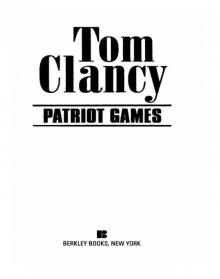 Patriot Games
Patriot Games The Sum of All Fears
The Sum of All Fears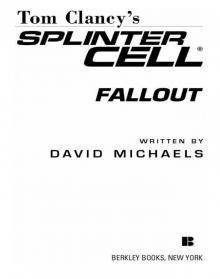 Fallout (2007)
Fallout (2007) Red Storm Rising
Red Storm Rising The Cardinal of the Kremlin
The Cardinal of the Kremlin Executive Orders
Executive Orders Lincoln, the unknown
Lincoln, the unknown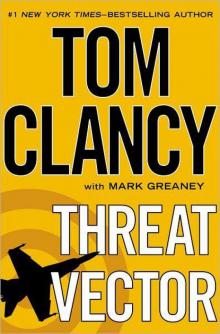 Threat Vector
Threat Vector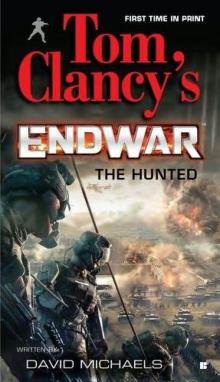 The Hunted
The Hunted Shadow Warriors: Inside the Special Forces
Shadow Warriors: Inside the Special Forces End Game
End Game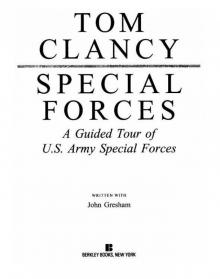 Special Forces: A Guided Tour of U.S. Army Special Forces
Special Forces: A Guided Tour of U.S. Army Special Forces Locked On
Locked On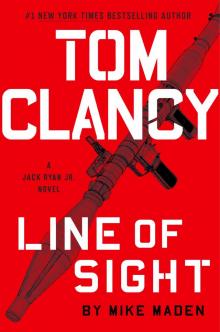 Line of Sight
Line of Sight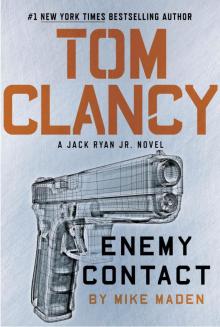 Tom Clancy Enemy Contact - Mike Maden
Tom Clancy Enemy Contact - Mike Maden Fighter Wing: A Guided Tour of an Air Force Combat Wing
Fighter Wing: A Guided Tour of an Air Force Combat Wing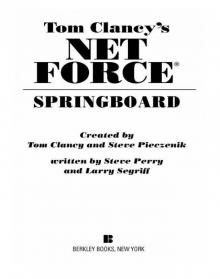 Springboard
Springboard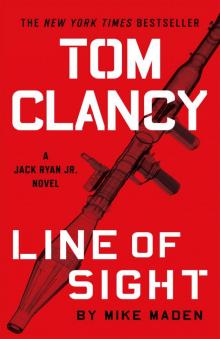 Line of Sight - Mike Maden
Line of Sight - Mike Maden EndWar
EndWar Dead or Alive
Dead or Alive Tom Clancy Support and Defend
Tom Clancy Support and Defend Checkmate
Checkmate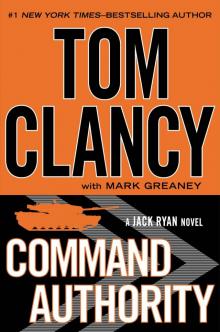 Command Authority
Command Authority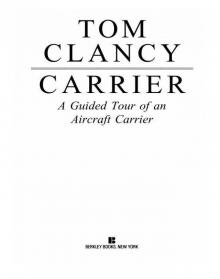 Carrier: A Guided Tour of an Aircraft Carrier
Carrier: A Guided Tour of an Aircraft Carrier Blacklist Aftermath
Blacklist Aftermath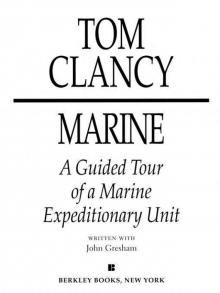 Marine: A Guided Tour of a Marine Expeditionary Unit
Marine: A Guided Tour of a Marine Expeditionary Unit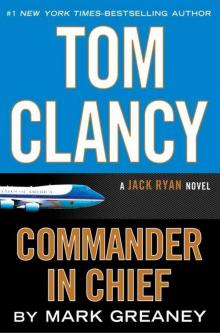 Commander-In-Chief
Commander-In-Chief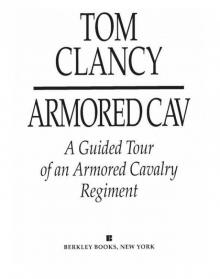 Armored Cav: A Guided Tour of an Armored Cavalry Regiment
Armored Cav: A Guided Tour of an Armored Cavalry Regiment Tom Clancy's Jack Ryan Books 1-6
Tom Clancy's Jack Ryan Books 1-6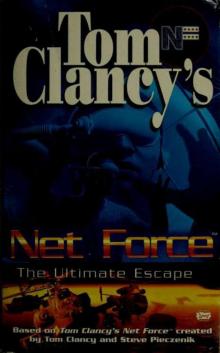 The Ultimate Escape
The Ultimate Escape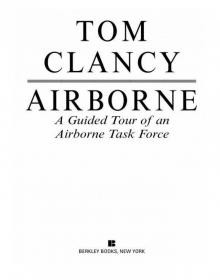 Airborne: A Guided Tour of an Airborne Task Force
Airborne: A Guided Tour of an Airborne Task Force Debt of Honor
Debt of Honor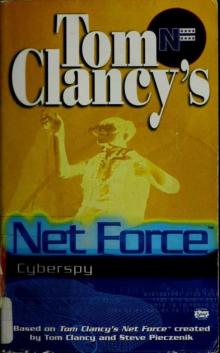 Cyberspy
Cyberspy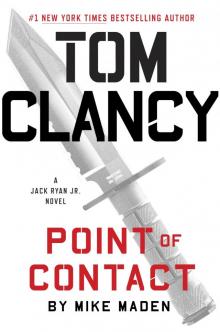 Point of Contact
Point of Contact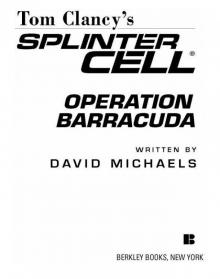 Operation Barracuda (2005)
Operation Barracuda (2005)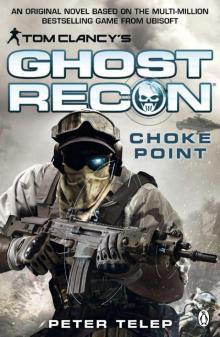 Choke Point
Choke Point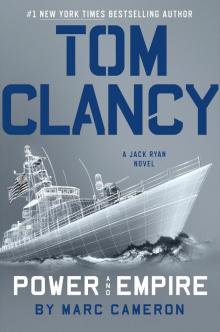 Power and Empire
Power and Empire Every Man a Tiger: The Gulf War Air Campaign
Every Man a Tiger: The Gulf War Air Campaign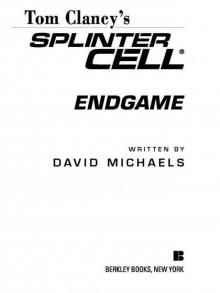 Endgame (1998)
Endgame (1998)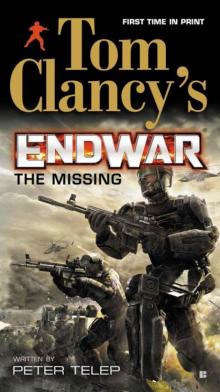 EndWar: The Missing
EndWar: The Missing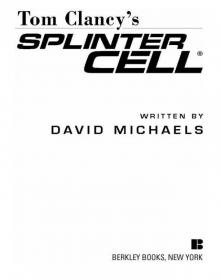 Splinter Cell (2004)
Splinter Cell (2004) The Great Race
The Great Race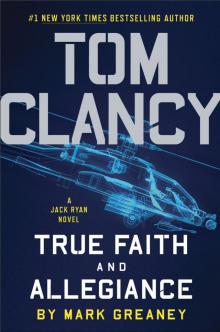 True Faith and Allegiance
True Faith and Allegiance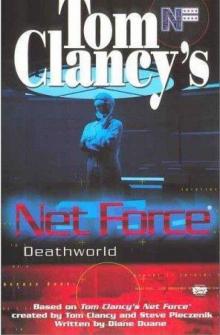 Deathworld
Deathworld Ghost Recon (2008)
Ghost Recon (2008)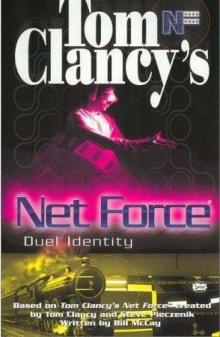 Duel Identity
Duel Identity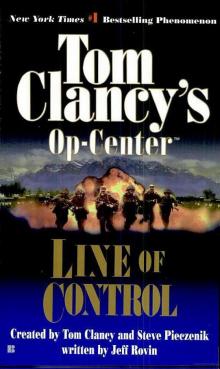 Line of Control o-8
Line of Control o-8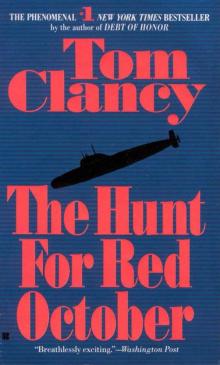 The Hunt for Red October jr-3
The Hunt for Red October jr-3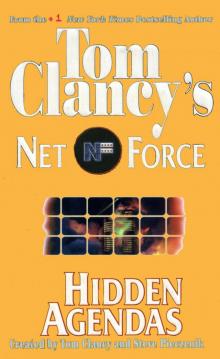 Hidden Agendas nf-2
Hidden Agendas nf-2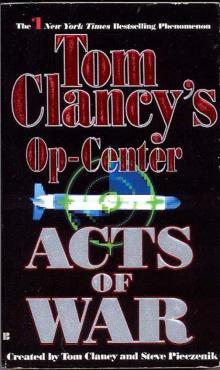 Acts of War oc-4
Acts of War oc-4 Ruthless.Com pp-2
Ruthless.Com pp-2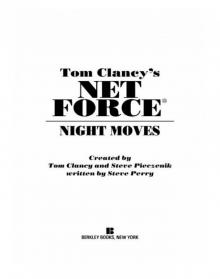 Night Moves
Night Moves The Hounds of Rome - Mystery of a Fugitive Priest
The Hounds of Rome - Mystery of a Fugitive Priest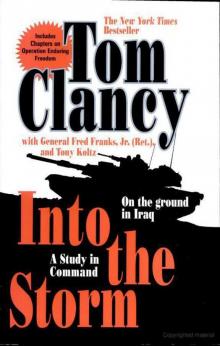 Into the Storm: On the Ground in Iraq sic-1
Into the Storm: On the Ground in Iraq sic-1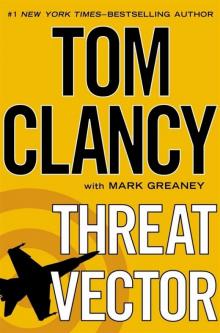 Threat Vector jrj-4
Threat Vector jrj-4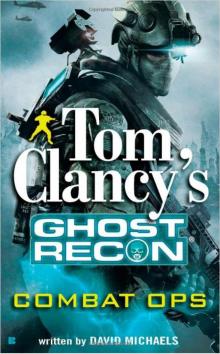 Combat Ops gr-2
Combat Ops gr-2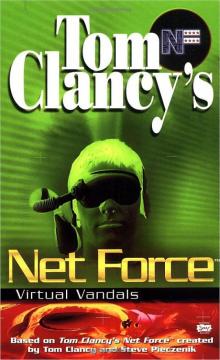 Virtual Vandals nfe-1
Virtual Vandals nfe-1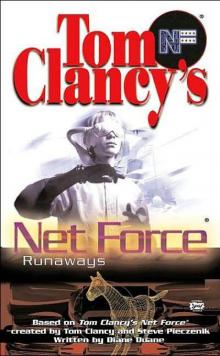 Runaways nfe-16
Runaways nfe-16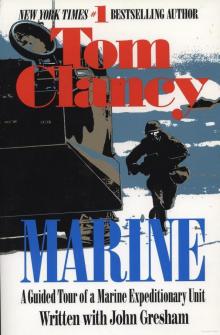 Marine: A Guided Tour of a Marine Expeditionary Unit tcml-4
Marine: A Guided Tour of a Marine Expeditionary Unit tcml-4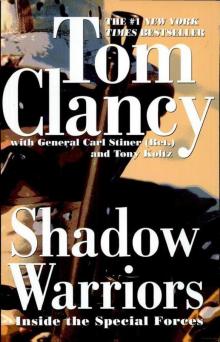 Shadow Warriors: Inside the Special Forces sic-3
Shadow Warriors: Inside the Special Forces sic-3 Jack Ryan Books 1-6
Jack Ryan Books 1-6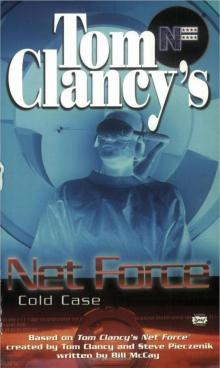 Cold Case nfe-15
Cold Case nfe-15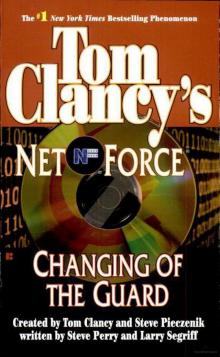 Changing of the Guard nf-8
Changing of the Guard nf-8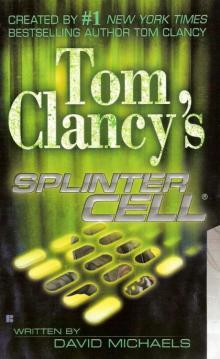 Splinter Cell sc-1
Splinter Cell sc-1 Battle Ready sic-4
Battle Ready sic-4 The Bear and the Dragon jrao-11
The Bear and the Dragon jrao-11 Fighter Wing: A Guided Tour of an Air Force Combat Wing tcml-3
Fighter Wing: A Guided Tour of an Air Force Combat Wing tcml-3 Patriot Games jr-1
Patriot Games jr-1 Jack Ryan Books 7-12
Jack Ryan Books 7-12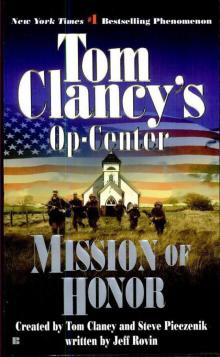 Mission of Honor o-9
Mission of Honor o-9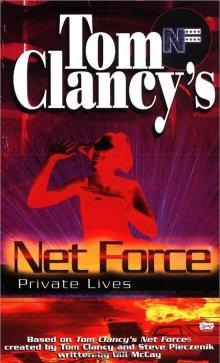 Private Lives nfe-9
Private Lives nfe-9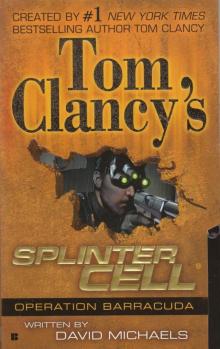 Operation Barracuda sc-2
Operation Barracuda sc-2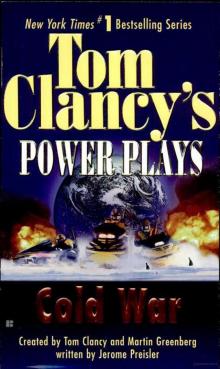 Cold War pp-5
Cold War pp-5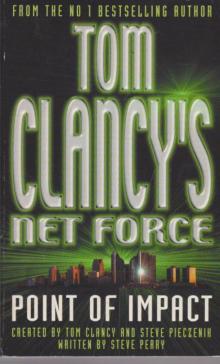 Point of Impact nf-5
Point of Impact nf-5 Red Rabbit jr-9
Red Rabbit jr-9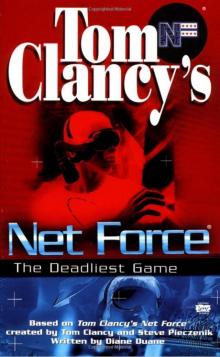 The Deadliest Game nfe-2
The Deadliest Game nfe-2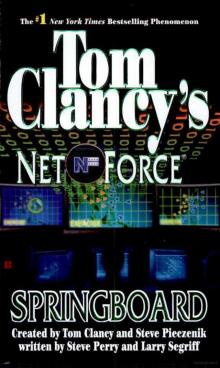 Springboard nf-9
Springboard nf-9 Safe House nfe-10
Safe House nfe-10 EndWar e-1
EndWar e-1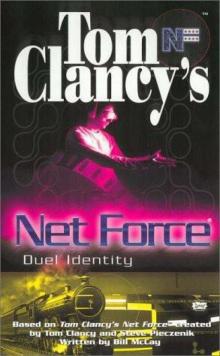 Duel Identity nfe-12
Duel Identity nfe-12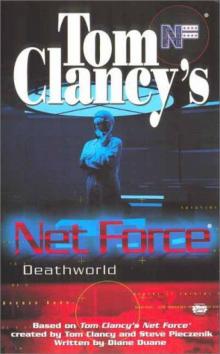 Deathworld nfe-13
Deathworld nfe-13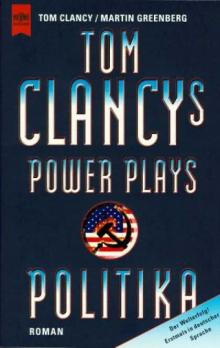 Politika pp-1
Politika pp-1 Rainbow Six jr-9
Rainbow Six jr-9 Tom Clancy's Power Plays 1 - 4
Tom Clancy's Power Plays 1 - 4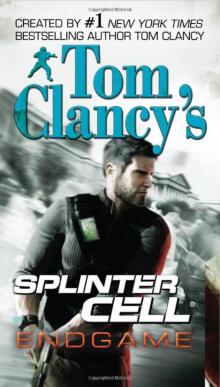 Endgame sc-6
Endgame sc-6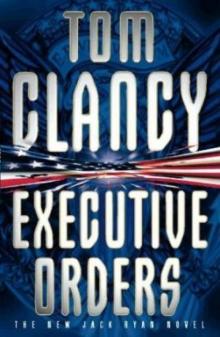 Executive Orders jr-7
Executive Orders jr-7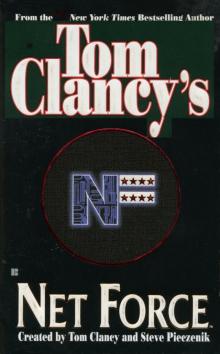 Net Force nf-1
Net Force nf-1 Call to Treason o-11
Call to Treason o-11 Locked On jrj-3
Locked On jrj-3 Against All Enemies
Against All Enemies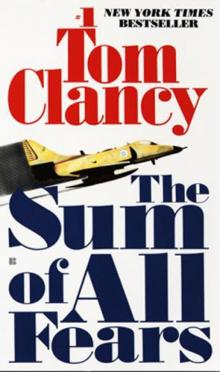 The Sum of All Fears jr-7
The Sum of All Fears jr-7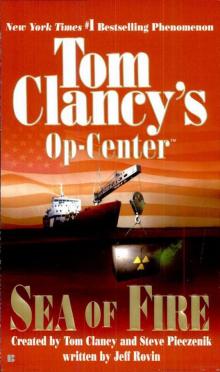 Sea of Fire o-10
Sea of Fire o-10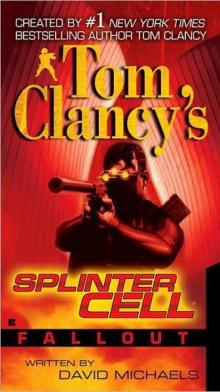 Fallout sc-4
Fallout sc-4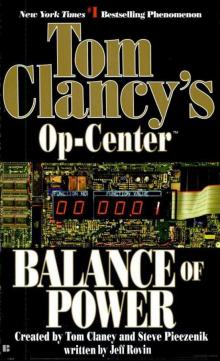 Balance of Power o-5
Balance of Power o-5 Shadow Watch pp-3
Shadow Watch pp-3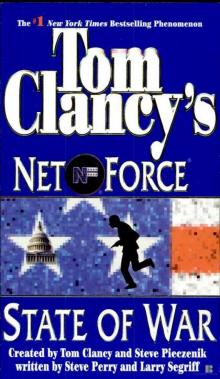 State of War nf-7
State of War nf-7 Wild Card pp-8
Wild Card pp-8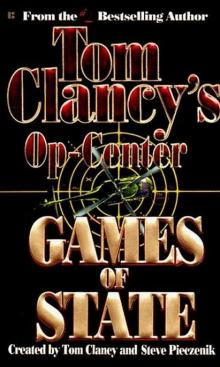 Games of State o-3
Games of State o-3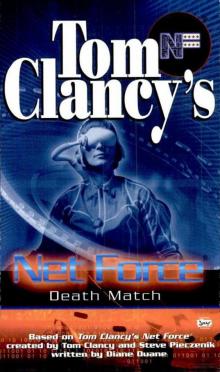 Death Match nfe-18
Death Match nfe-18 Against All Enemies mm-1
Against All Enemies mm-1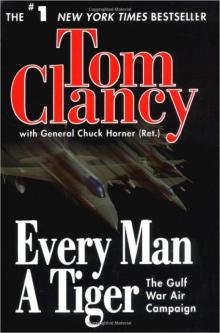 Every Man a Tiger: The Gulf War Air Campaign sic-2
Every Man a Tiger: The Gulf War Air Campaign sic-2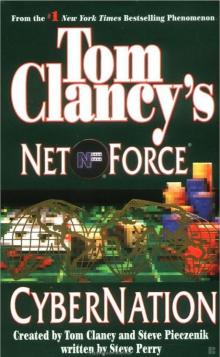 Cybernation nf-6
Cybernation nf-6 Support and Defend
Support and Defend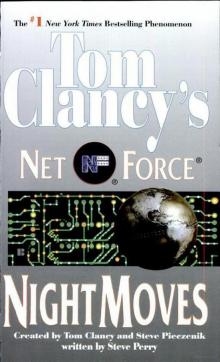 Night Moves nf-3
Night Moves nf-3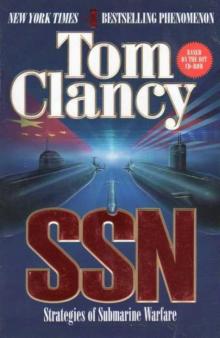 SSN
SSN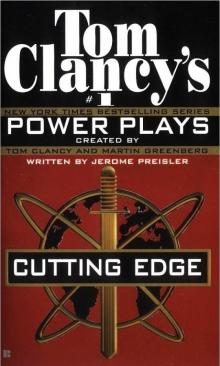 Cutting Edge pp-6
Cutting Edge pp-6 The Cardinal of the Kremlin jrao-5
The Cardinal of the Kremlin jrao-5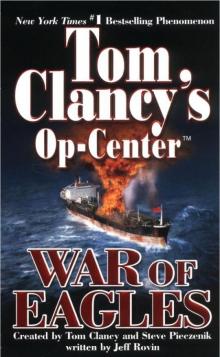 War of Eagles o-12
War of Eagles o-12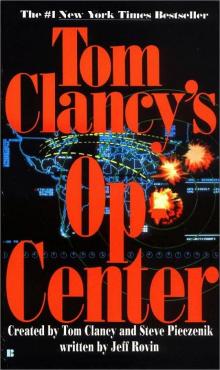 Op-Center o-1
Op-Center o-1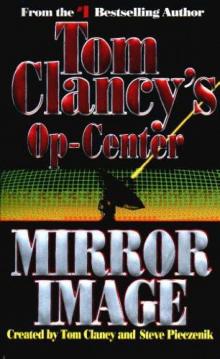 Mirror Image o-2
Mirror Image o-2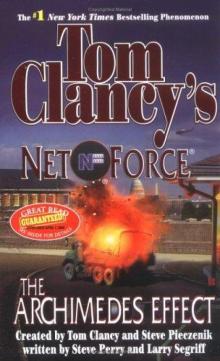 The Archimedes Effect nf-10
The Archimedes Effect nf-10 Teeth of the Tiger jrj-1
Teeth of the Tiger jrj-1 Bio-Strike pp-4
Bio-Strike pp-4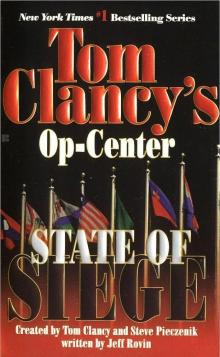 State of Siege o-6
State of Siege o-6 Debt of Honor jr-6
Debt of Honor jr-6 Zero Hour pp-7
Zero Hour pp-7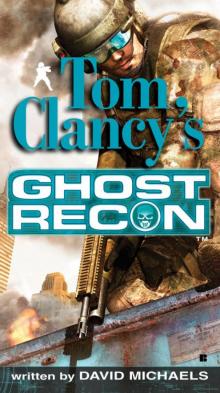 Ghost Recon gr-1
Ghost Recon gr-1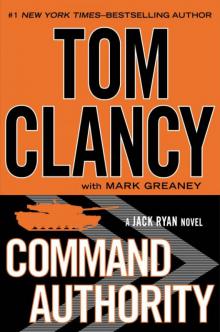 Command Authority jr-10
Command Authority jr-10 Tom Clancy's Power Plays 5 - 8
Tom Clancy's Power Plays 5 - 8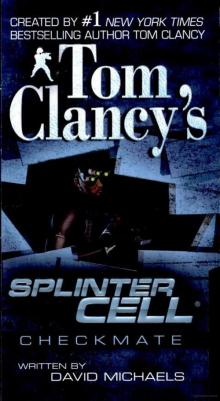 Checkmate sc-3
Checkmate sc-3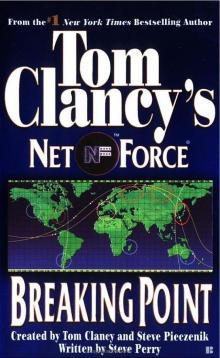 Breaking Point nf-4
Breaking Point nf-4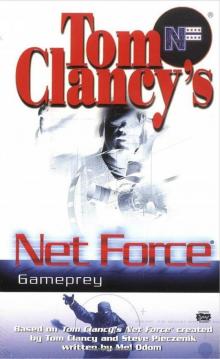 Gameprey nfe-11
Gameprey nfe-11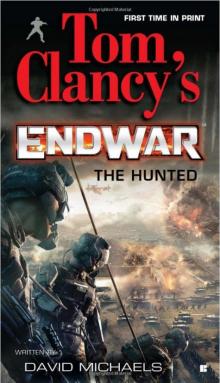 The Hunted e-2
The Hunted e-2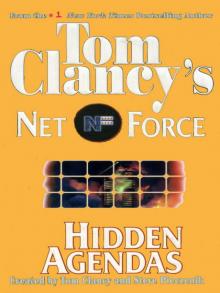 Hidden Agendas
Hidden Agendas Divide and Conquer o-7
Divide and Conquer o-7